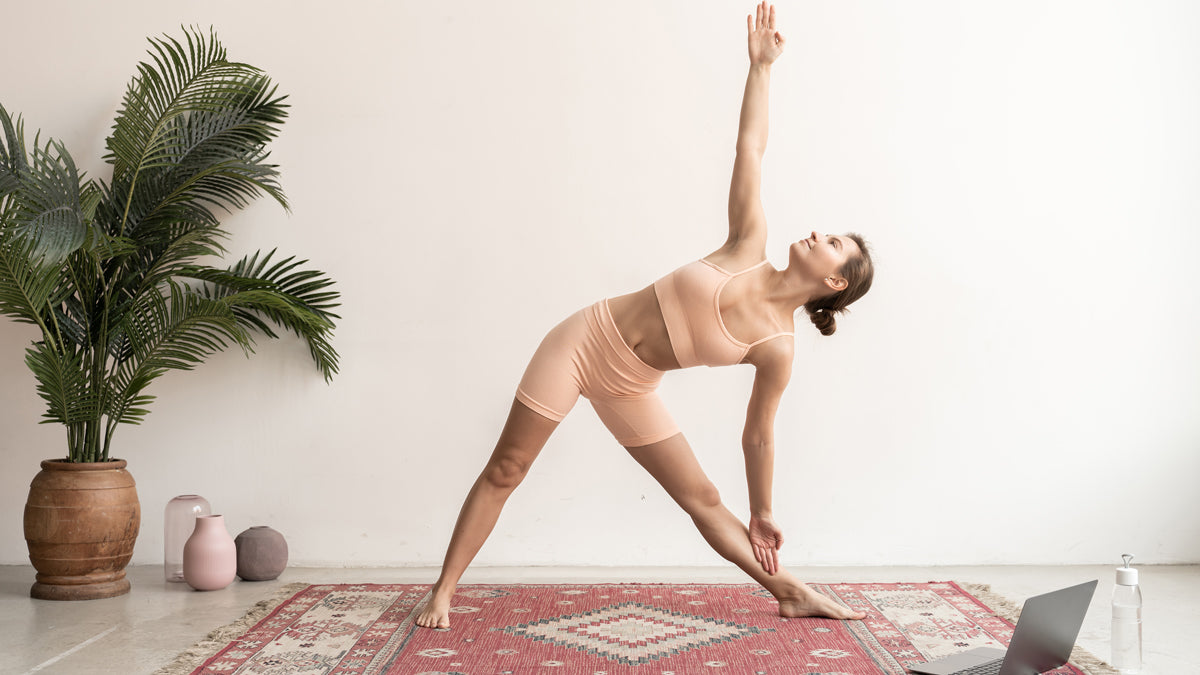When you think of yoga, what comes to mind will depend on your specific experience with the practice.
Whether you prefer a faster-paced style of yoga that helps you to build strength, an alignment-focused type that improves your balance and posture, or a slower practice that focuses mostly on meditation and breathing, there's a style of yoga out there for you.
What are some different types of yoga and their benefits? Among the most widely practiced, especially in places such as the U.S. and Europe, are Vinyasa, Ashtanga, Bikram (or "hot yoga") and a handful of others.
The great thing about yoga is that it offers health perks for both your body and mind—such as relieving stress and boosting flexibility—plus you can practice alone at home, in group classes, or at various types of studios and retreat centers. Overall, cultivating a yoga practice is a great way to own your health and well-being.
Popular Types of Yoga Explained
Yoga is definitely one of the most popular ways to practice self care, considering that millions of people consider themselves to be at least part time "yogis."
A little known fact about yoga is that asanas, or postures, are only one aspect of the practice. Yoga actually includes various branches that focus on more than just physical poses; these include branches dedicated to breathwork, meditation, self reflection, mindful living, and compassion towards yourself and others.
While there are more than a dozen different types of yoga practiced around the world, here are some of the most common, what they entail, and their main benefits.
Vinyasa
If you've ever taken a yoga class at a gym or yoga studio that is simply called "yoga," chances are you were doing Vinyasa yoga, which is one type of Hatha yoga (a broader term).
Vinyasa is considered the most popular type of yoga in the U.S. It's a somewhat physically demanding practice, depending on the specific teacher and class, and involves "flowing" from one yoga posture into the next while linking movement with breath.
The main benefits of Vinyasa yoga include improving strength, flexibility, mobility, and coordination, lowering stress, and possibly helping you to cope with anxiety and depression (since these classes tend to deepen your breath and get your heart rate up, like other forms of exercise).
Ashtanga
Similar to Vinyasa, Ashtanga is a flowing style of yoga, geared towards those who are focused on becoming physically fit, as it tends to move at a quick pace.
Unlike Vinyasa classes, Ashtanga classes follow a specific series of poses every time, in the same order, with the goal of continuing to improve alignment, balance, strength, and endurance. For example, "sun salutations" are included in Ashtanga classes, which help to loosen up the whole body, including toning the back, legs, and arms, while also deepening the breath.
The main benefits of Ashtanga yoga include building muscle strength and coordination, improving endurance, decreasing stress, and boosting confidence.
Iyengar
Iyengar is very focused on achieving proper alignment, so these classes move at a slower pace and hold poses for longer in order to deepen into stretches. This type of yoga was created by the world-renowned yogi named B.K.S. Iyengar, who is credited with helping to spread yoga through the "West."
The main benefits of Iyengar yoga include improving flexibility, helping to deeply stretch tight areas such as the hips and low back, and building strength in a slower, low-impact way.
Bikram
"Hot yoga" usually, but not always, refers to Bikram yoga, assuming the class follows a specific series of postures. Not all hot/heated yoga is actually Bikram because true Bikram yoga involves doing the same postures each time in the same order to progressively get stronger and more flexible.
The main benefits of Bikram yoga include improving strength, potentially helping to support weight loss (since hot yoga uses up a lot of energy), boosting flexibility, helping to cope with stress and anxiety, and improving sleep.
Restorative/Yin
Of all the types of yoga, restorative is the most gentle and relaxation-focused, making it a great option for those who are physically limited and/or who want to practice a form of "moving meditation."
Most restorative yoga (also called Yin yoga) classes involve holding only about 5 to 10 postures for an extended period of time, such as up to 10 minutes for each pose. Many classes will incorporate props such as bolsters, blankets, and straps to help make postures more comfortable while also providing a deep stretch.
Like other kinds of yoga, restorative yoga emphasizes steady breathing, specifically by taking slow, controlled breaths in and out of the nose. Due to its calming effects, it's one of the best forms of yoga to practice as part of a night time self care routine to improve sleep.
The main benefits of restorative yoga include lowering stress and anxiety, helping to promote self reflection, intention setting, and mindfulness, improving flexibility, and possibly helping to deepen sleep and decrease pain by lowering inflammatory responses and muscle tension.
Kundalini
Kundalini is a unique practice that’s been described as "equal parts physical and spiritual." While there are some postures involved, such as lots of arm movements, squats, and backbends, there's also a big emphasis on releasing negative energy in the body with help from chants and breathing exercises.
Some Kundalini classes can be pretty challenging and strength-building, while others are more still and restorative.
The main benefits of Kundalini yoga include improving your mood and energy, fighting stress and anxiety, toning and building muscle strength, deepening spirituality, and fostering feelings of connectedness and gratitude.
What kind of yoga practice resonates with you, and why?





